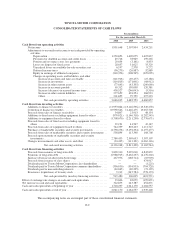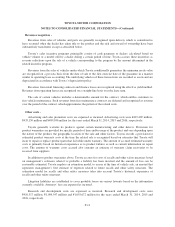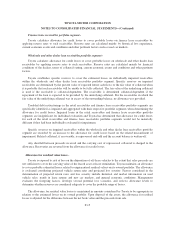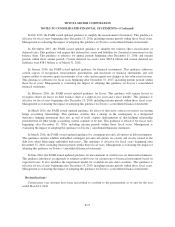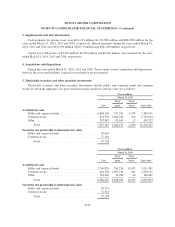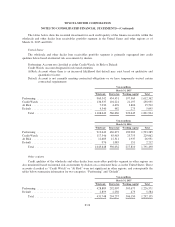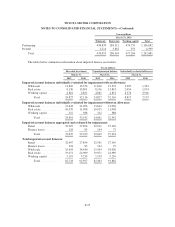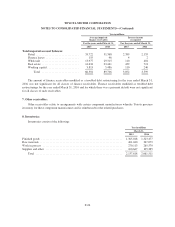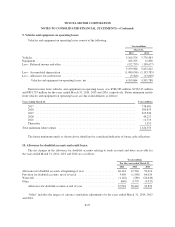Toyota 2015 Annual Report Download - page 159
Download and view the complete annual report
Please find page 159 of the 2015 Toyota annual report below. You can navigate through the pages in the report by either clicking on the pages listed below, or by using the keyword search tool below to find specific information within the annual report.TOYOTA MOTOR CORPORATION
NOTES TO CONSOLIDATED FINANCIAL STATEMENTS—(Continued)
Other comprehensive income -
Other comprehensive income refers to revenues, expenses, gains and losses that, under U.S.GAAP are
included in comprehensive income, but are excluded from net income as these amounts are recorded directly as
an adjustment to shareholders’ equity. Toyota’s other comprehensive income is primarily comprised of
unrealized gains/losses on marketable securities designated as available-for-sale, foreign currency translation
adjustments and adjustments attributed to pension liabilities associated with Toyota’s defined benefit pension
plans.
Accounting changes -
In April 2014, the FASB issued updated guidance on reporting discontinued operations and disclosures of
disposals of components of an entity. Under the new guidance, only disposals that represent a strategic shift and
that have (or will have) a major effect on an entity’s operations and financial results should be presented as
discontinued operations. Toyota adopted this guidance on April 1, 2015. The adoption of this guidance did not
have a material impact on Toyota’s consolidated financial statements.
Recent pronouncements to be adopted in future periods -
In May 2014, the FASB issued updated guidance on the recognition of revenue from contracts with
customers. This guidance will supersede the current revenue recognition guidance. In August 2015, the FASB
issued updated guidance on the deferral of the effective date. As a result, this guidance is effective for annual
reporting periods beginning after December 15, 2017, including interim periods within that reporting period.
Management is evaluating the impact of adopting this guidance on Toyota’s consolidated financial statements.
In February 2015, the FASB issued updated guidance that amends the analysis a reporting entity must
perform to determine whether it should consolidate certain legal entities. This guidance is effective for fiscal
years, and for interim periods within those fiscal years, beginning after December 15, 2015. Management is
evaluating the impact of adopting this guidance on Toyota’s consolidated financial statements.
In April 2015, the FASB issued updated guidance that requires debt issuance costs related to a recognized
debt liability be presented in the balance sheet as a direct deduction from the carrying amount of the related debt
liability instead of being presented as an asset. In August 2015, the FASB issued an additional update which
clarifies that debt issuance costs for line of credit agreements may continue to be deferred and amortized. This
guidance is effective for fiscal years beginning after December 15, 2015, and interim periods within those fiscal
years. Management does not expect this guidance to have a material impact on Toyota’s consolidated financial
statements.
In April 2015, the FASB issued updated guidance to help entities evaluate the accounting for fees paid by a
customer in a cloud computing arrangement. This guidance is effective for annual periods, including interim
periods within those annual periods, beginning after December 15, 2015. Management is evaluating the impact of
adopting this guidance on Toyota’s consolidated financial statements.
In May 2015, the FASB issued updated guidance on disclosures for investments in certain entities that
calculate net asset value per share. This guidance removes the requirement to categorize within the fair value
hierarchy all investments for which fair value is measured using the net asset value per share practical expedient.
This guidance is effective for fiscal years beginning after December 15, 2015, including interim periods within
those fiscal years. Management is evaluating the impact of adopting this guidance on Toyota’s consolidated
financial statements.
F-18



